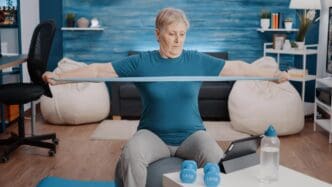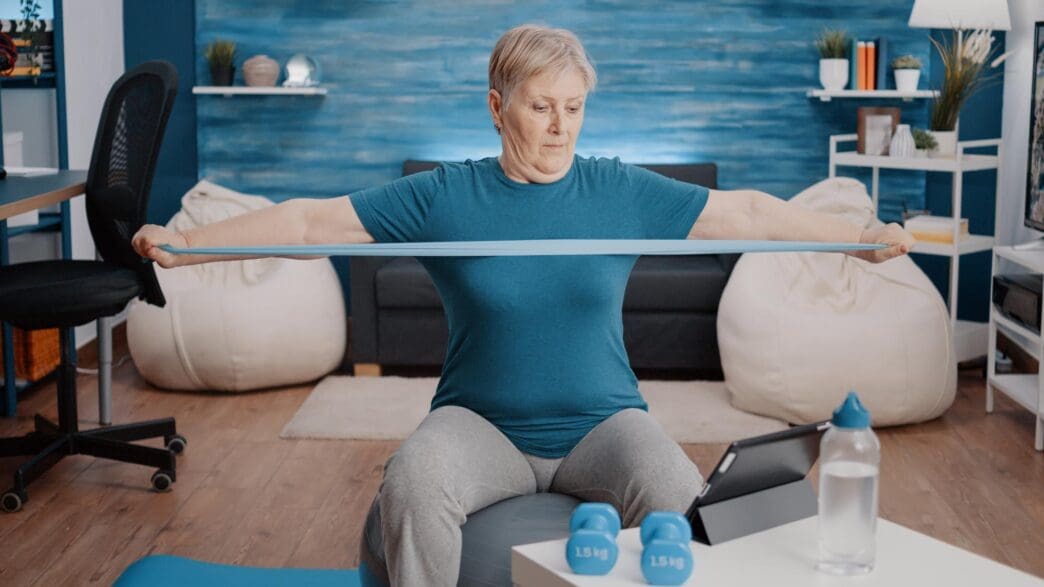A Quick Takeaway
The Story Behind the Trend
How to Make It Work for You
The Community View
As individuals progress through life, maintaining peak physical performance and unlocking longevity requires a strategic and informed approach to exercise. Adapting workout routines becomes essential for everyone, regardless of their current fitness level, as the body naturally undergoes changes in muscle mass, bone density, flexibility, and cardiovascular efficiency. This proactive modification of exercise not only mitigates age-related decline but also enhances overall quality of life, reduces injury risk, and supports sustained health, ensuring that physical activity remains a cornerstone of well-being for decades to come.
Understanding the Aging Body
The human body is a dynamic system, and as we age, it experiences predictable physiological changes. Muscle mass naturally begins to decline after age 30, a process known as sarcopenia, which can accelerate significantly after 60. Bone density also decreases, making bones more fragile and susceptible to fractures, while cartilage in joints can thin, leading to stiffness and reduced range of motion.
Furthermore, the cardiovascular system becomes less efficient, with a gradual reduction in maximal heart rate and aerobic capacity. Recovery times after exercise tend to lengthen, and the body’s ability to regulate temperature can also change. These transformations are a natural part of aging, but their impact can be significantly managed and even mitigated through consistent and appropriately adapted physical activity.
Why Adaptation is Crucial for Longevity
Adapting your exercise regimen as you age is not about slowing down; it’s about training smarter to maintain functionality, prevent injury, and optimize health. Modified workouts help preserve muscle strength, which is vital for everyday tasks and maintaining independence. They also support bone health, reducing the risk of osteoporosis and fractures, and improve joint mobility, alleviating pain and stiffness.
Beyond physical benefits, tailored exercise programs boost cardiovascular health, enhance cognitive function, improve mood, and aid in managing chronic conditions such as diabetes and heart disease. By adjusting intensity, duration, and type of exercise, individuals can continue to challenge their bodies effectively and safely, fostering a robust foundation for a long, active life.
Core Principles for Age-Adapted Exercise
Successful age-adapted exercise hinges on several fundamental principles. First and foremost, it is crucial to listen to your body, distinguishing between healthy challenge and pain that signals potential injury. Prioritizing proper form over heavy weight or high speed becomes paramount to ensure safety and effectiveness, especially in strength training.
Progressive overload remains a key concept, meaning that you should gradually increase the demands on your body, but this progression should be mindful and incremental. Incorporating variety in your routine helps work different muscle groups, prevents boredom, and reduces overuse injuries. Finally, consistency is the ultimate driver of results; regular, even if shorter, workouts are far more beneficial than sporadic, intense sessions.
Key Exercise Modalities to Prioritize
Strength Training
Strength training is arguably the most critical component of an age-adapted fitness plan. It directly combats sarcopenia, builds bone density, boosts metabolism, and improves functional strength for daily activities. Focus on compound movements that work multiple muscle groups, such as squats, lunges, presses, and rows, using bodyweight, resistance bands, or light dumbbells.
Aim for two to three strength training sessions per week, allowing adequate recovery time between workouts. As you progress, you can gradually increase repetitions, sets, or resistance, always ensuring your form remains impeccable.
Cardiovascular Health
Maintaining a healthy heart and lungs is essential for energy and endurance. As you age, low-impact cardiovascular activities become increasingly beneficial, reducing stress on joints. Options like brisk walking, swimming, cycling, elliptical training, or dancing offer excellent aerobic benefits.
Strive for at least 150 minutes of moderate-intensity aerobic activity or 75 minutes of vigorous-intensity activity per week, spread throughout the week. Moderate intensity means you can still talk but not sing, while vigorous activity makes conversation difficult.
Flexibility and Balance
Flexibility and balance are often overlooked but are crucial for preventing falls, improving posture, and enhancing overall movement quality. Activities like yoga, Pilates, and Tai Chi are excellent for developing both. Incorporate static stretches for major muscle groups, holding each stretch for 20-30 seconds, after your muscles are warmed up.
Balance exercises, such as standing on one leg, heel-to-toe walking, or using a balance board, should be practiced regularly. These help improve proprioception and strengthen the stabilizing muscles around joints, significantly reducing fall risk.
Mind-Body Connection
Engaging in activities that foster a strong mind-body connection can reduce stress, improve focus, and enhance body awareness. Practices like yoga, Tai Chi, and Qigong combine physical postures, breathing techniques, and meditation, offering holistic benefits for both mental and physical well-being. These modalities can improve flexibility, balance, strength, and promote a sense of calm and clarity.
Practical Tips for Implementation
Beginning any new exercise program, especially as you age, should start with a consultation with your doctor to ensure it’s safe and appropriate for your health status. Consider working with a certified personal trainer who specializes in older adults; they can create a personalized plan and teach proper form.
Start slowly, gradually increasing duration and intensity as your body adapts. Prioritize adequate hydration before, during, and after exercise, and ensure you’re getting sufficient sleep to support recovery and muscle repair. Most importantly, choose activities you genuinely enjoy; making exercise a pleasurable part of your routine is key to long-term adherence and success.
Sustaining a Vibrant Future
To truly unlock longevity and sustain peak performance, embracing an adaptive approach to exercise is not merely advisable but essential. By understanding the body’s natural changes, prioritizing strength, cardiovascular health, flexibility, and balance, and implementing smart, consistent strategies, individuals can continue to reap the profound benefits of physical activity throughout their lives. This personalized evolution of your fitness journey ensures that age becomes an asset, not an obstacle, to a vibrant and active future.







